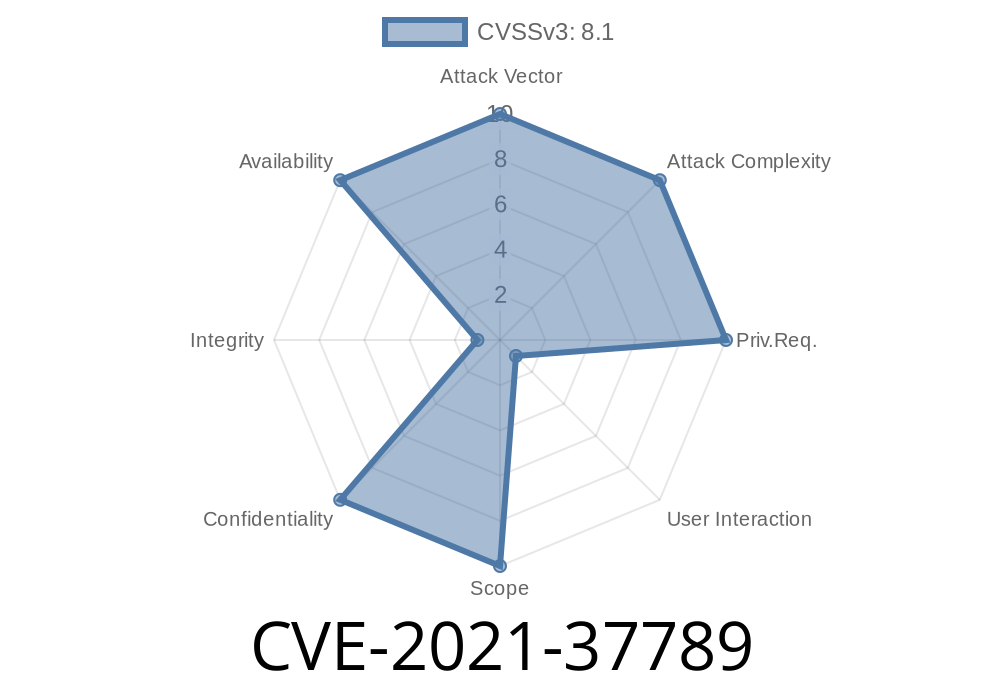A vulnerability, CVE-2021-37789, was recently discovered in stb_image.h version 2.27, a popular C header-only image-loading library. This vulnerability is a heap-based buffer overflow that occurs in the stbi__jpeg_load function and could lead to information disclosure or denial of service. In this post, we will take a closer look at the stb_image.h vulnerability, its root cause, and potential exploit scenarios. We will also provide code snippets and links to original references for a better understanding of this vulnerability.
The Vulnerability
A heap-based buffer overflow occurs when an attacker overwrites data in the heap, which can lead to data corruption, information disclosure, or even a denial of service. In the stb_image.h vulnerability, this takes place in the stbi__jpeg_load function that is responsible for decoding JPEG images.
To understand where the bug lies and how it might be exploited, let's delve into the code itself.
The buffer overflow exists in the stbi__jpeg_load function. Here's an excerpt of the relevant code
stbi_uc *stbi__jpeg_load(stbi__context *s, int *x, int *y, int *comp, int req_comp, stbi__result_info *ri)
{
(...)
if (!stbi__mad3sizes_valid(icomp, width, height, ))
return stbi__errpuc("too large", "Corrupt JPEG");
(...)
data = (stbi_uc *) stbi__malloc_mad3sizes(icomp, width, height, );
(...)
}
As seen above, the function initially checks if the image size is valid with the stbi__mad3sizes_valid function. If the image size is valid, memory is then allocated using the stbi__malloc_mad3sizes function, which calculates the required memory allocation based on the image's dimensions and components. However, the vulnerability lies in the fact that it does not validate if the dimensions passed are within the acceptable range for the particular JPEG format or if there's enough memory to hold the buffered data. This omission can lead to a heap-based buffer overflow.
Exploit Details
To exploit this vulnerability, an attacker can craft a malicious JPEG image with manipulated dimensions aimed at causing a heap-based buffer overflow. This can lead to information disclosure, whereby an attacker can access sensitive data stored in the heap, or a denial of service in which the application or the entire system can crash.
An example of how this vulnerability might be exploited is as follows
int main()
{
int x,y,n;
unsigned char *data = stbi_load("malicious.jpg", &x, &y, &n, );
(...)
}
Here, a malicious JPEG image, "malicious.jpg," is used to trigger the heap-based buffer overflow in the stbi__jpeg_load function of stb_image.h.
Original References
1. CVE Details: https://nvd.nist.gov/vuln/detail/CVE-2021-37789
2. stb_image.h GitHub Repository: https://github.com/nothings/stb/blob/master/stb_image.h
3. stb_image.h v2.27 exploit details: https://github.com/nothings/stb/issues/1096
Conclusion
In conclusion, we've explored the heap-based buffer overflow vulnerability (CVE-2021-37789) found in stb_image.h 2.27 and its potential consequences on information disclosure and denial of service. By understanding these vulnerabilities and keeping software and libraries up to date, we can better protect applications from being exploited.
To mitigate this vulnerability, developers are advised to update their stb_image.h library to the latest version or implement necessary input validation checks wherever stbi__jpeg_load is being used or JPEG images are being loaded.
Timeline
Published on: 11/02/2022 13:15:00 UTC
Last modified on: 02/28/2023 18:31:00 UTC
